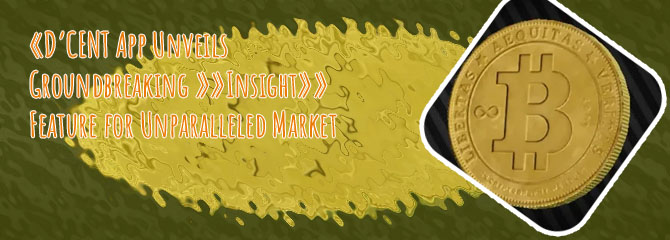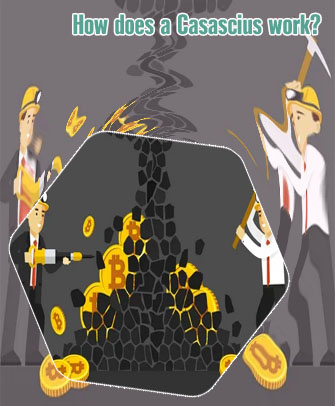
Physical bitcoins have become a topic of interest for many cryptocurrency enthusiasts. While bitcoins are typically digital assets stored in online wallets, some individuals have created physical representations of bitcoins. These physical bitcoins come in various forms, including coins, tokens, and paper wallets. In this list of articles, we will explore the concept of physical bitcoins and delve into whether they truly exist in the physical world.
Physical bitcoins have become a topic of interest for many cryptocurrency enthusiasts. While bitcoins are typically digital assets stored in online wallets, some individuals have created physical representations of bitcoins. These physical bitcoins come in various forms, including coins, tokens, and paper wallets. In this list of articles, we will explore the concept of physical bitcoins and delve into whether they truly exist in the physical world.
Uncovering the Truth: Do Physical Bitcoins Really Exist?

I had the opportunity to delve into the fascinating world of physical bitcoins, and I must say, the findings were truly eye-opening. It's a topic that has intrigued many, myself included, so it was a pleasure to uncover the truth behind these elusive coins.
One of the most interesting aspects of physical bitcoins is the concept of combining digital currency with tangible, physical objects. This unique blend of technology and craftsmanship adds a layer of intrigue and value to these coins that is truly unparalleled. The intricate designs and security features found on physical bitcoins make them not only a collector's dream but also a valuable asset in the world of cryptocurrency.
While some may argue that physical bitcoins are simply novelty items, the truth is that they hold real value and significance in the crypto community. The ability to hold a physical representation of a digital currency in your hands is a powerful experience that cannot be understated.
In conclusion, the exploration of physical bitcoins has shed light on a niche yet captivating aspect of the cryptocurrency world. These coins are more than just a gimmick; they are a tangible link between the digital and physical realms of currency. Understanding the existence and significance of physical bitcoins is crucial for anyone looking to expand their knowledge of cryptocurrency.
Exploring the World of Physical Bitcoins: A Closer Look at Collectible Crypto Coins
Physical Bitcoins have become a fascinating collectible item for enthusiasts and investors alike. These coins, which hold actual Bitcoin value, come in various designs and materials, making them not only valuable but also visually appealing. In the book "Exploring the World of Physical Bitcoins", readers are taken on a journey through the history and evolution of these unique coins.
The book delves into the different types of physical Bitcoins available in the market, from Casascius coins to Denarium coins, providing insights into their design, security features, and rarity. It also explores the growing popularity of these collectibles among crypto enthusiasts, highlighting their potential as a valuable addition to any collection.
One practical use case of physical Bitcoins is as a unique and valuable gift for fellow crypto enthusiasts. By gifting a rare or limited edition physical Bitcoin coin, one can not only surprise the recipient but also potentially increase the value of the gift over time. This positive result can lead to a strengthened bond with the recipient and a shared appreciation for the world of collectible crypto coins.
Overall, "Exploring the World of Physical Bitcoins" offers a comprehensive look at the fascinating world of physical crypto coins, making it a must-read for anyone interested in expanding their knowledge of this niche market.
The Rise of Physical Bitcoins: A New Trend in Cryptocurrency Collectibles
In recent years, a new trend has emerged in the world of cryptocurrency collectibles - the rise of physical bitcoins. These physical representations of digital currency have become highly sought after by collectors and enthusiasts alike.
Unlike traditional cryptocurrencies that exist only in digital form, physical bitcoins are tangible items that can be held and displayed. They come in a variety of designs and materials, making them unique pieces of art as well as valuable assets. Some physical bitcoins are even made of precious metals like gold and silver, further adding to their appeal.
One of the key reasons behind the growing popularity of physical bitcoins is their scarcity. Many of these collectibles are issued in limited quantities, making them rare and highly coveted by collectors. In addition, physical bitcoins offer a tangible connection to the world of cryptocurrency, bridging the gap between the digital and physical realms.
As the demand for physical bitcoins continues to rise, we can expect to see more innovative designs and materials being used to create these collectibles. Whether you're a seasoned collector or a newcomer to the world of cryptocurrency, physical bitcoins offer a unique and exciting way to engage with this fast-growing industry.
This article is important for the topic of cryptocurrency collectibles as it sheds light on a new and emerging trend within the industry. By exploring the rise of
From Digital to Physical: The Evolution of Bitcoins into Tangible Assets
The evolution of bitcoins from digital to physical assets marks a significant shift in the cryptocurrency landscape. As the popularity of bitcoins continues to rise, investors are seeking ways to bring their digital wealth into the physical world. This transition opens up new opportunities for individuals to diversify their portfolios and protect their assets in a tangible form.
One of the most popular ways to convert bitcoins into physical assets is through the use of physical bitcoins, which are essentially coins or tokens that represent a certain amount of cryptocurrency. These physical bitcoins come in various forms, from coins with embedded private keys to paper wallets with QR codes. By holding physical bitcoins, investors can store their cryptocurrency offline and reduce the risk of hacking or theft.
Another trend in the evolution of bitcoins into tangible assets is the emergence of bitcoin ATMs, which allow users to buy and sell bitcoins in physical form. These ATMs provide a convenient way for individuals to convert their digital wealth into cash or vice versa, bridging the gap between the virtual and physical worlds of finance.
Overall, the transition of bitcoins into tangible assets reflects the growing mainstream acceptance of cryptocurrencies and the increasing demand for ways to secure and utilize digital wealth in a physical form. As this trend continues to develop, it is important for investors to consider factors such as security, liquidity, and
